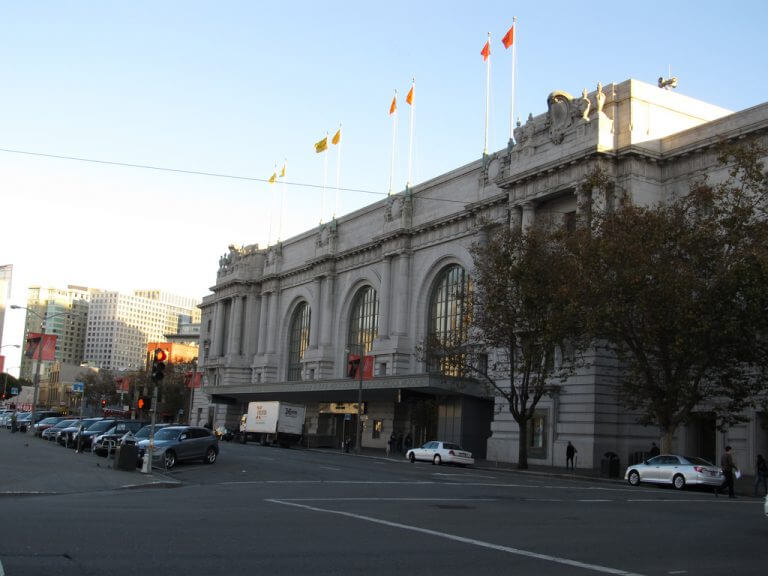
It’s the End of the Beginning for Mobile

Brett Caine CEO
Seven years ago we introduced Urban Airship to mobile app developers at WWDC 2009, handing out coffee and donuts to the hording masses waiting to get in. We didn’t have a ticket to attend ourselves, but we had the first functioning third-party push notification service that made it easy to use this brand new form of communication.
Fast-forward through lots of change and Urban Airship now regularly delivers one billion notifications a day for 40,000 apps including some of the best known brands in the world. Today, we achieved a major milestone of delivering half a trillion notifications (500 billion) over our company’s history.
While we’re proud of our scale and reliability, this achievement is a reflection of something much larger — the growth of direct-to-customer mobile connections and the re-thinking of marketing as a real-time customer experience.
Those are big, broad, seismic-shifting topics and by many measures it’s early days for businesses achieving their full mobile potential.
The One Constant is Change
It’s an annual tradition: Apple and Android continue to make notifications a richer and more interactive and actionable part of the mobile experience. Android Lollipop brought support for big text and images, as well as interactive buttons that came to Apple with iOS 8.
Last week, iOS 10 cranked notification richness to another level with 3D Touch notifications enabling live status updates and video playback within the notifications themselves.
Apple demonstrated 3D Touch on an iOS 10 rich notification from Uber immediately displaying a live map.
Other key iOS 10 improvements make Apple’s focus on increasing the reach, function and impact of apps abundantly clear:
-
A new “Rise to Wake” feature improves visibility of lockscreen notifications
-
App widgets gain surface-level visibility on the lockscreen with quick-as-Camera-access from the home screen
-
Apps now have access to build for Siri, iMessage, Phone, Maps, and real-time activity data from Apple Watch
This steady stream of innovation from the major mobile operating systems is both great news and a constant challenge for businesses seeking the best ways to connect with their customers in highly meaningful ways.
Capability and Thinking Continue to Outpace Adoption
Seven years after the advent of push notifications, only 23% of businesses regularly use them, according to Forrester Research Inc.’s March 2016 report, “The State of Mobile Marketer Tactics: 2016” (copies available for a limited time). That’s despite 60% of businesses having iOS and Android apps, and our own data studies finding that opting in to push notifications quadruples user engagement and doubles retention on average. This disparity is symptomatic of marketing’s traditional focus on customer acquisition — a focus that emphasizes app downloads over engaging customers on their terms and in ways only mobile can.
More recent advents like in-app messaging, mobile wallets, smartwatches and beacons see current use in the single-digit to low double-digit ranges, despite being purpose-built for mobile. Interactive notifications, which use button taps to extend app actions and user feedback to the notification layer, are only currently used by 12% of businesses.
While these may sound like features, some of which may be discounted by a particular app’s purpose, they are fundamental to engaging more customers at the right time, in highly relevant ways that are as effortless as possible.
For years, some of the industry’s leading thinkers have advanced the idea of invisible apps and notifications as the interface. It’s a shift from thinking of notifications as entry points to apps, to being actionable items themselves. Even more broadly, it’s about re-thinking apps as things that need to be opened to provide value. Apps can tap into today’s richest source of behavioral data, layer on location, and trigger or segment from data in other business systems, to serve customers personally and predictively within their moment of need.
According to Forrester Research Inc., “estimates show that up to 75% of interactions consumers have with mobile phones are … micro moments — a mobile moment that delivers information through only a glance to let the consumer either process or act on it immediately” (Vendor Landscape: Mobile Engagement Automation Solutions, Forrester Research Inc., November 5, 2015).
Adopting capabilities like interactive notifications, new 3D Touch enabled rich notifications and even widgets are fundamental to realizing the true promise of mobile — going beyond information at our fingertips, to frictionless, predictive, proactive service, when and where we want it.
The Winds of Change Come with Hot Air
Recent headlines would have you believe the era of apps is over. I’m here to say we’re just getting started. We’re getting down to the business of mobile.
Yes, becoming a top 200 app is a longer road than ever. But it was already improbably long for the vast majority of apps. The good news is that there are very few business models that rely on mass reach: advertising-supported and some broad mobile-only companies. But the vast majority of the work left to do is mobilizing the real world and all business operations. Undeniably, mobile is the front door to business, but it’s customers, suppliers, resellers and employees in your neighborhood or region walking through it. That front door also isn’t necessarily apps, with the latest direct-to-consumer opportunities including mobile wallet marketing and a possible future of chatbots offering lightweight, service-oriented interactions.
When that front door is an app, there are also very few of them that would consider greater time spent a measure of success. The ones that do, we refer to as our favorite time-wasters: Games and Social The other big category according to comScore’s oft-cited “The U.S. Mobile App Report” is Radio, which is often used passively in the background. Every app wants to make usage habitual but the optimal frequency will vary, and when I think about the ultimate promise of mobile, it’s to make things easier, faster and even magical, not take more of my time and attention.
With the last favorite naysayer stat, I bring some fresh statistical perspective. comScore has some great data on average app downloads per month, but the dire, attention-seeking summation we hear repeatedly is that most U.S. mobile phone users download zero apps per month. We recently fielded the same question to a panel of 1,000 US and 1,000 UK smartphone users and found:
-
62% of US respondents and 65% of UK respondents downloaded between 1-4 apps in the past month
-
Only 18% of US respondents and 26% of UK respondents haven’t downloaded any apps in the past month
-
Millennials downloaded the most apps in the past month with 36% saying 3-4 apps, 22% saying 5 to 7 apps and 7% saying “too many to remember”
-
Nearly a third of people (31%) between the ages of 35-54 downloaded 3-4 apps in the past month
App Annie’s Mobile App Forecast projects gross revenue across all app stores to increase from $51 billion in 2016 to $101 billion in 2020. We’re also seeing this play out with certain countries being a close second to the U.S. in terms of the number of users adopting Urban Airship’s mobile engagement platform — a rate of adoption that has never been higher since the company was first to market seven years ago.
It’s Going to Get Harder Being Average on Mobile
At WWDC 2016, Apple announced it now has 2 million apps in the App Store, matching the number in Google’s Play Store. Several countries around the world are reaching the saturation point for smartphone adoption. With fewer new users and more competition driving the cost of app user acquisition higher, there has never been a better and more necessary time to flip your script and start putting more energy and investment toward user engagement and retention. Gillian Morris cited it best:
“If you invest in growth before you have retention, you’re renting users, not acquiring them.”
With both notification opt-in rates and engagement rates being multiples of what companies see in other customer communications channels, it has been too easy to pay mobile engagement lip-service. But data shows a massive difference between average apps and top-performers with notification engagement rates that are 6X higher for the latter. We also found in-app message center messages get opened and read 8X more often than notifications get tapped or swiped.
And that’s not to mention all the sophistication you can apply with targeting, automation, interactive responses, location/proximity and data from other systems, helping you zero-in and successfully serve the mobile moments that really matter.
The end of the beginning for mobile is about getting down to business and the fundamentals of providing valued and uniquely mobile experiences. It’s also about looking forward to its expanding ecosystem. I have a feeling things will never be the same again as we increasingly live, work, travel and meander in sensor-laden, AI-ready, VR-begging environments.
We can’t wait to send our next 500 billion notifications and help greet and assist people through these new experiences! It’ll happen faster than before, and we’ll go out on a long limb to say it will occur in 2017.
Subscribe for updates
If the form doesn't render correctly, kindly disable the ad blocker on your browser and refresh the page.
Related Posts


The Next Big Thing is Already Here
